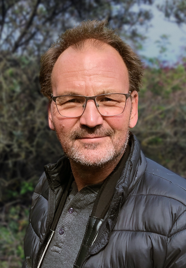Introduction
Welcome to my personal home page. Using the tabs above you can find information about my publications, software packages and teaching, whereas below you find information about my research. In case you want to know more, please contact me using the address information given below.Research
Broadly speaking, my research focuses on the relationship between individual life history, in particular ontogenetic development, and the dynamics of populations and communities. Textbooks in ecology define population dynamics as the fluctuations in time and space of the number of individuals in a population. This definition implies that only the life history processes of reproduction and mortality determine population dynamics, as these processes change the number of individuals present. The main body of theory concerning population dynamics and community structure is hence based on the analysis of unstructured, Lotka-Volterra type population dynamic models, which ignore differences between individuals. In contrast, all individual organisms of all species on Earth develop during life from the moment they are born till the moment they die. In between these individuals might reproduce, but the majority generally does not. Hence, after mortality ontogenetic development can be considered the most prominent life history process. Changes during ontogeny result in individuals playing a different ecological role in the different stages of their life history.The main aspect of ontogenetic development is growth in body size as every individual at least has to double in size before it can replicate itself. Since somatic growth requires energy, the rate at which individuals increase in size depends in most species on the food conditions these individuals experience. My research is hence about the population and community ecology of ontogenetic development, in particular food-dependent growth. The results of this research were first synthesized in a Princeton Monograph that appeared in 2013. However, since then new insights have emerged. To summarize the current understanding of the impact of individual development and life history on population and community dynamics I recorded a video, in which I present many of these novel insights. In the presentation I present an approach to link dynamics at the level of individuals (or even within individuals) to the population and community level, discusses some existing model frameworks that have been used in ecology to link individual and population level and also show how model simplifcation and the development of appropriate minimal models can provide mechanistic understanding as well as a way to study effects in more complex communities. Finally, I not only discuss ecological dynamics but in the last part also turn to evolutionary dynamics. Be warned though, it is a LONG presentation covering 3 hours in total. However, it is divided into different chapters which allows you to jump to different sections if your browser supports this feature. You can access the presentation by clicking the image shown below. If you can find the time to watch the presentation I would love to hear feedback.
As my main tool to address questions about the connection between individual life history and population dynamics I use a class of models, known as physiologically structured population models. The basic characteristic of these models is that state concepts are introduced at both the individual and the population level and that model formulation is entirely restricted to individual-level, life history processes. The dynamics of the population simply result from keeping book of all individual-level changes. During the initial years of my scientific career I primarily focused on developing numerical tools to analyze these models, moving on to applying these models to solve ecological questions later on. At present, my interests still span a broad variety of topics, ranging from on the one hand gaining a deeper understanding about ecological communities in which size structure plays a role to developing mathematical concepts for modeling biological populations and analyzing biological models. Much of my research over the last decade has been carried out in close collaboration with my colleague, friend and brother-in-arms Lennart Persson, an aquatic ecologist at the University of Umeå. Given his strong background in aquatic ecology it is not surprising that most of the models that we study focus on the interaction within and between size-structured fish populations. Through analysis of size-structured models we have revealed how such changes during life history may affect the dynamics and structure of the ecological community.
I highly recommend to check out the presentation in the video above as well as my Princeton Monograph “Population and Community Ecology of Ontogenetic Development” for even more details.

André M. de Roos
Professor of Theoretical Ecology
Institute for Biodiversity and Ecosystem Dynamics
University of Amsterdam
P.O. box 94240, 1090 GE Amsterdam
Science Park 904 (Room C4.164), 1098 XH Amsterdam
The Netherlands
Phone: +31 20 5257747
Email: A(dot)M(dot)deRoos(at)uva(dot)nl